The Many Styles of Spinning Drafts
Spinning drafts can be divided into two broad categories: worsted and woollen. Their underlying difference is where the twist is harnessed and the manner in which the twist is released.
Drafting is the process of gently pulling and thinning out fibre to prepare it for spinning into yarn. A draw refers to a specific technique for drafting the fibre.
The Drafting Zone
The drafting zone is sometimes referred to by other authors as a drafting triangle. To my way of thinking, the drafting zone includes the drafting triangle as well as the fibre pulled from the drafting triangle before it becomes yarn. I think this distinction between the two terms makes it easier for people to visualize the mechanics.
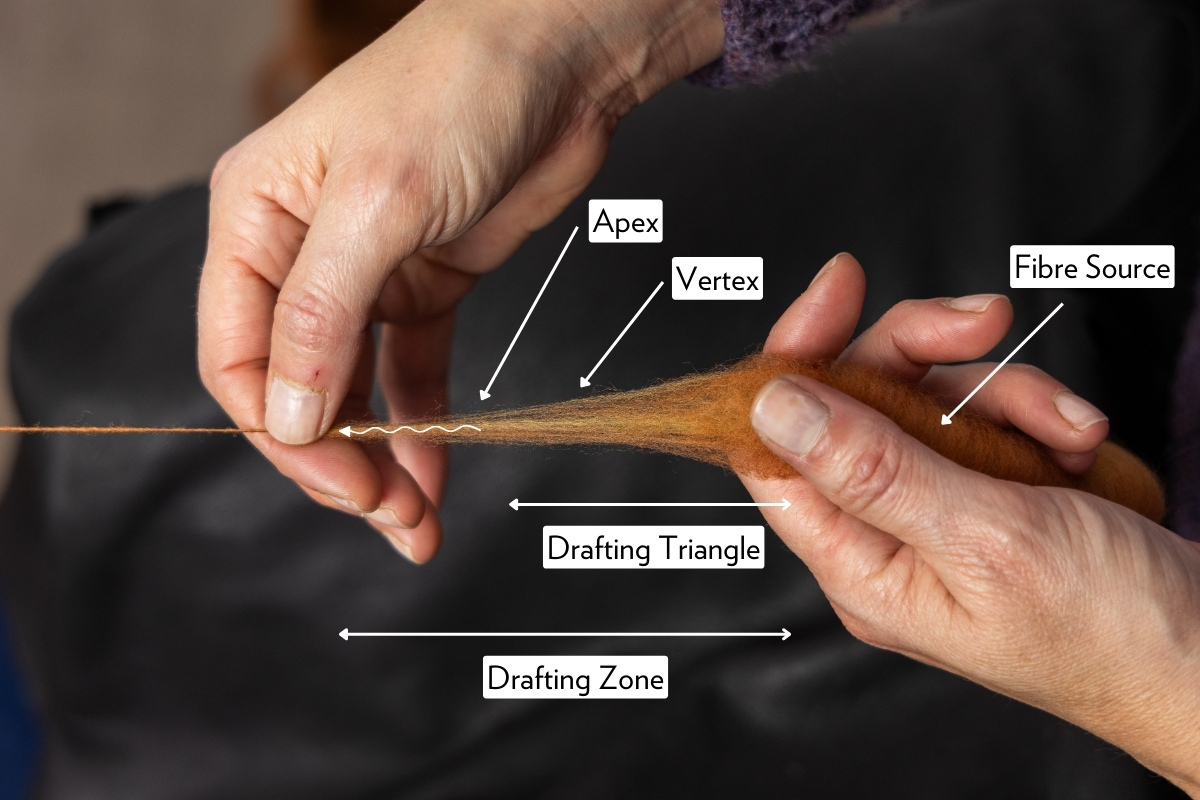
| WORSTED DRAFTS | WOOLLEN DRAFTS |
|---|---|
| Short Forward Draw | Medium Woollen Draw |
| Short Backward Draw | Supported Drafts -Supported Long Draw -Sliding Long Draw |
| Continuous Backward Draw | Unsupported Draw |
| Double Draw | |
| Forward Long Draw |
Worsted Drafts
The worsted draft can be broken down into three subcategories, the short forward, short backward, and continuous backward draw. The job of the forward hand in each of these worsted drafts is to control the twist. The forward hand corrals the twist maintained between the forward hand and the orifice. As the forward hand moves towards the back hand, the twist follows and is kept in tow by the pinching fingers which remain in contact with the fibre as the pinching fingers slide back down to the drafting triangle.
Short Forward Worsted Draw
In a short forward worsted draw, the back hand remains stationary and is used to support the fibre. The forward hand pinches down at the top of the drafting triangle and pulls a length of fibre in the direction of the orifice. Note: The thicker you wish the yarn to be, the deeper you pinch into the vertex. For a thinner yarn, pinch closer to the apex. After the prescribed length has been drawn, the forward hand slides back along the drafted fibre to grasp another length of the fibre. A make of yarn is created as the pinching fingers make their way back to the drafting triangle. As the forward hand slides back, it maintains contact with the drafted fibre. The contact helps to keep the twist in tow, preventing it from slipping past the pinching fingers and into the drafting triangle and fibre source. After sliding back, the forward hand pinches down to draw more fibre from the drafting triangle and the cycle continues.
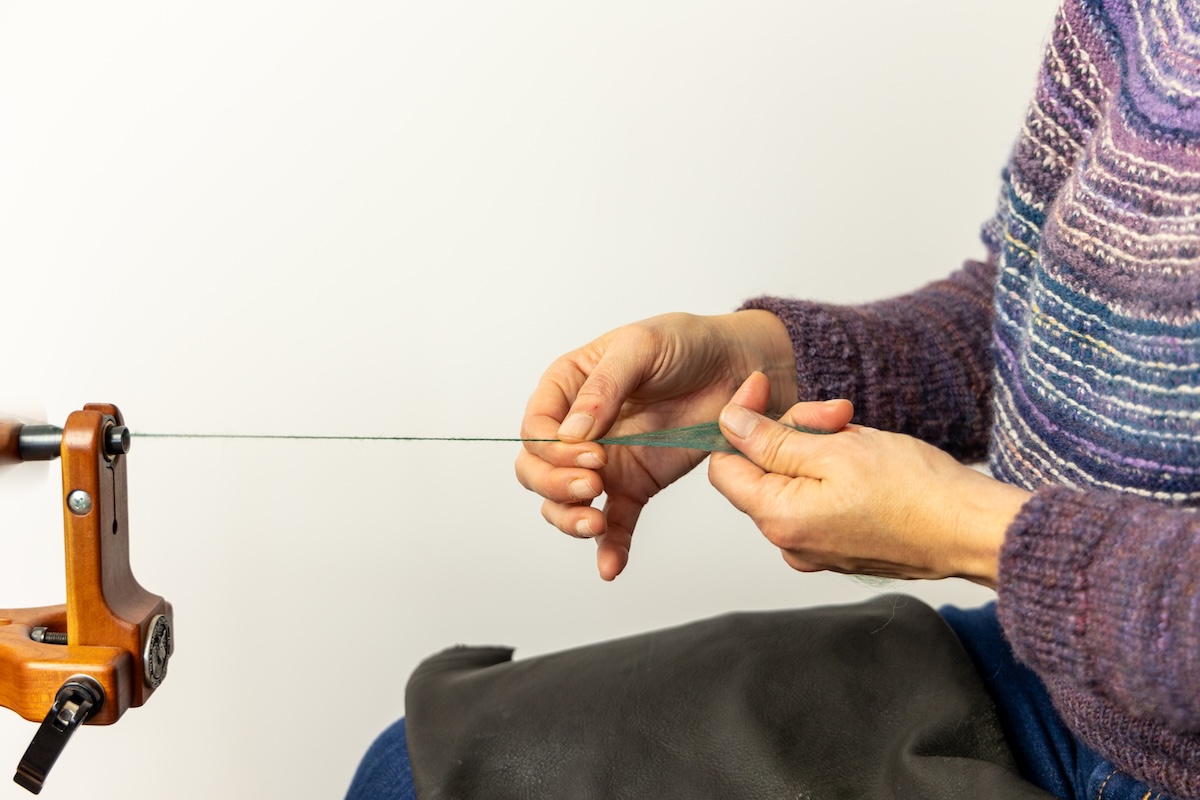
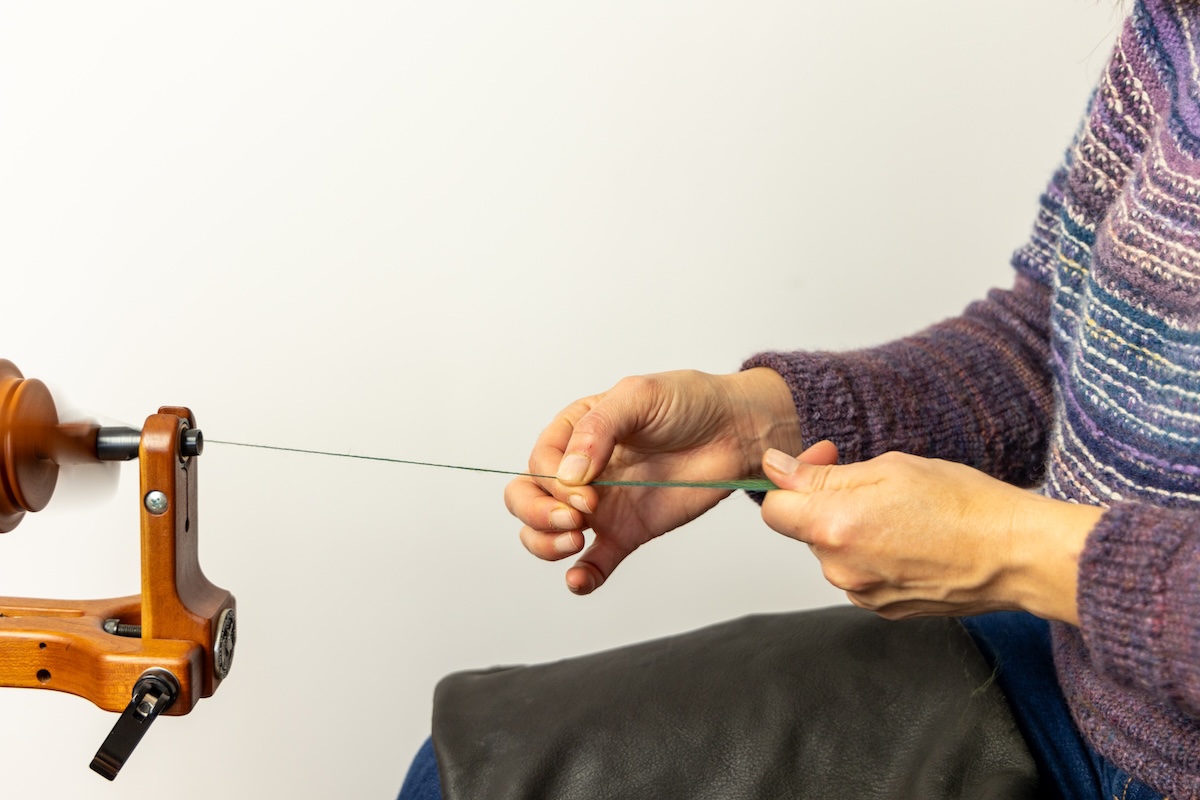
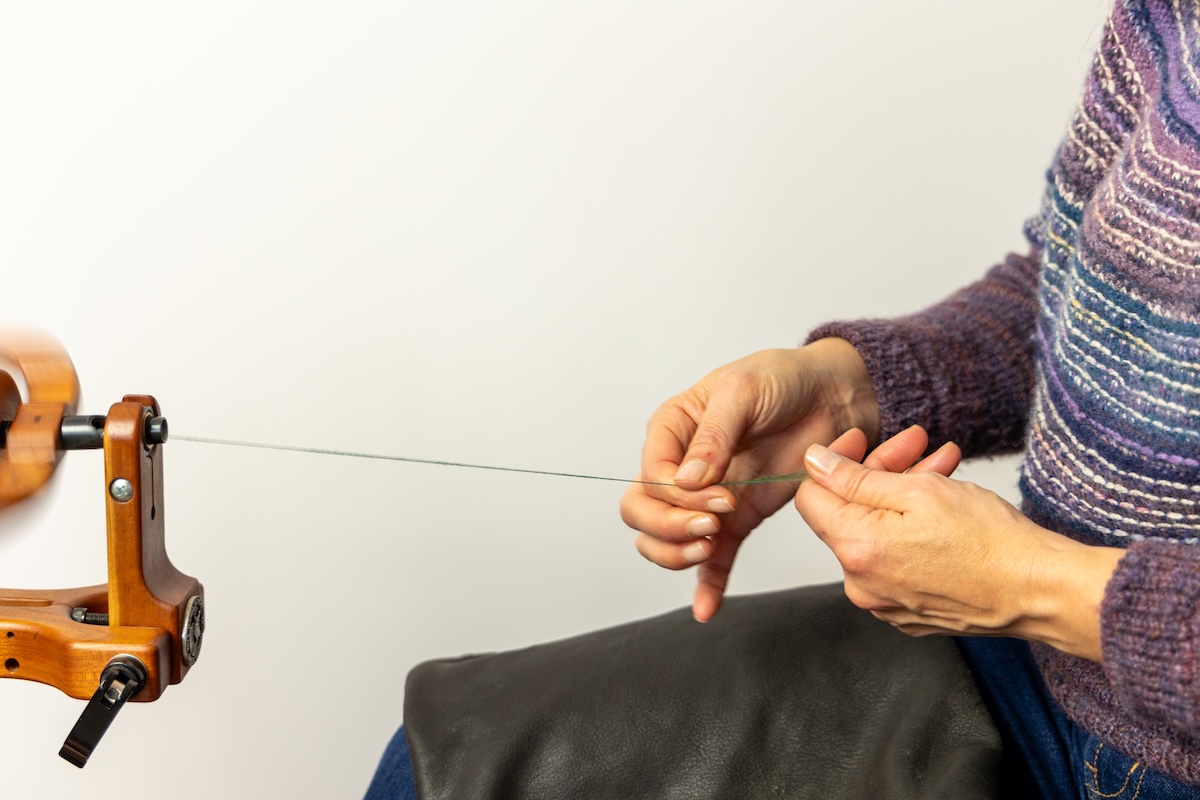
Short Backward Worsted Draw
In a short backward worsted draw, the forward hand pinches down at the top of the drafting triangle while the back hand pulls back towards the spinner to draft a length of fibre. The forward hand slides back towards the back hand with the twist in tow. The forward hand then pinches down on the fibre to stop the twist, both hands move forward in unison, and the cycle continues.
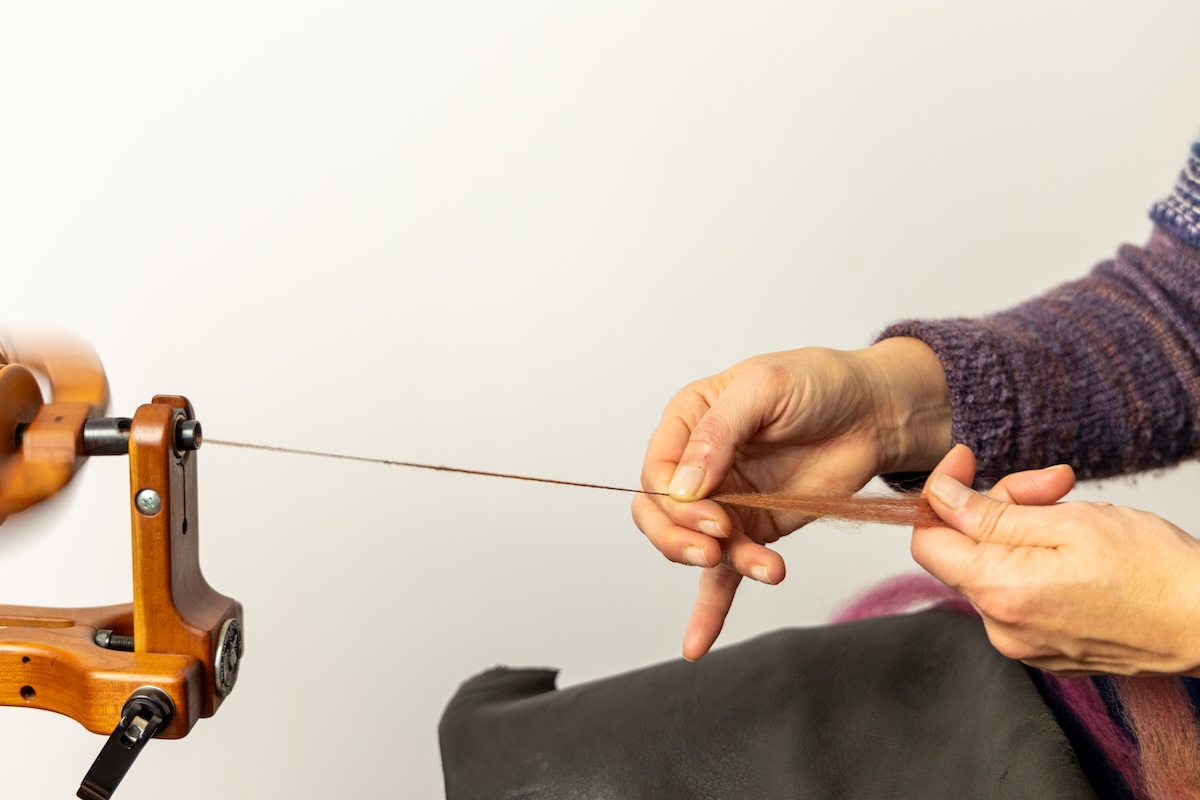
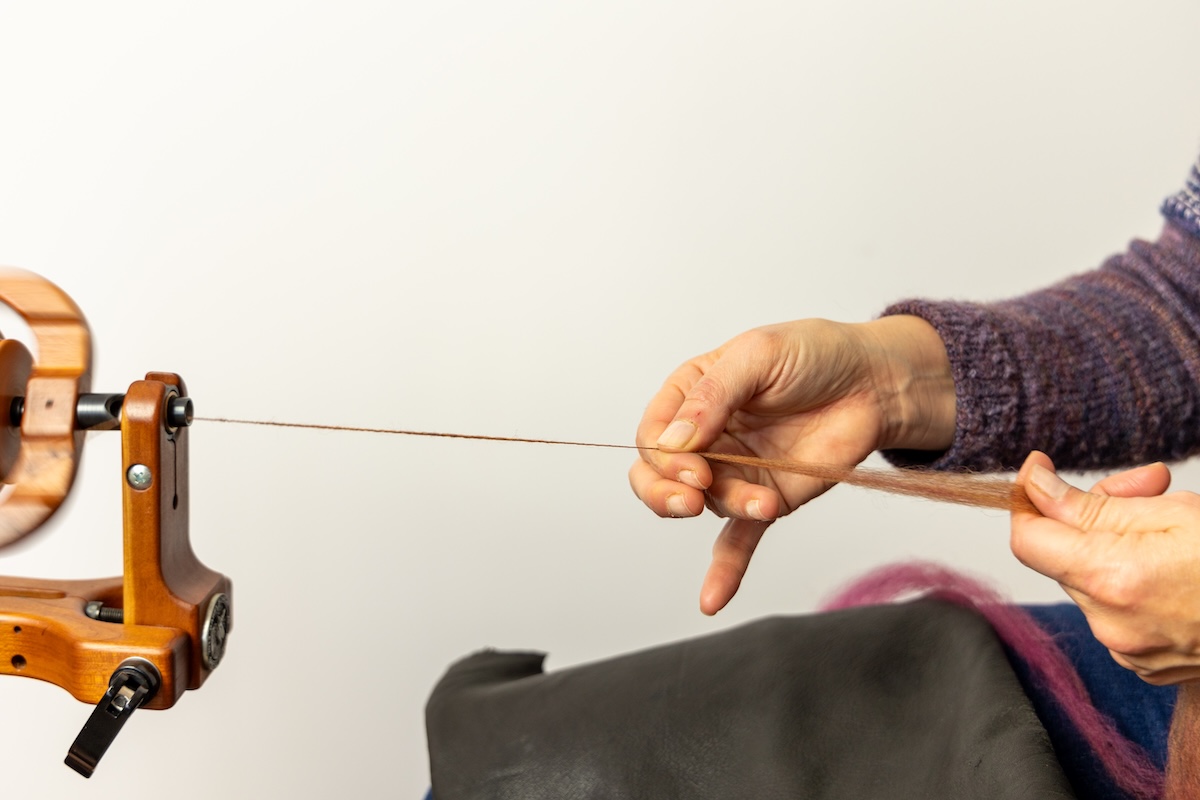
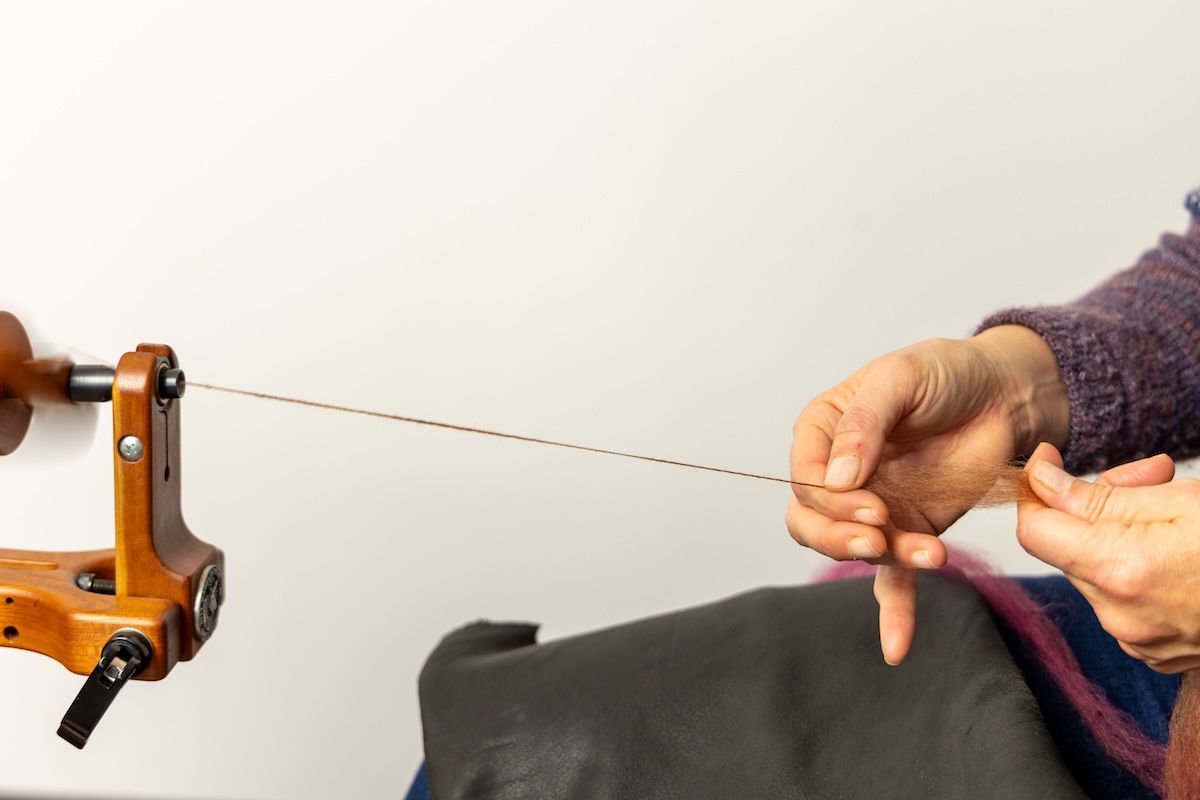
Continuous Backward Worsted Draw
In a continuous backward worsted draw, instead of both hands moving forward after the first draft, the motion of drafting back is repeated multiple times before both hands move forward in unison to draw the make of yarn onto the bobbin.
Woollen Drafts
To implement a woollen draft, the twist is kept between the two hands. As fibre is pulled against the twist, the fibre thins out, allowing the twist to move towards the drafting triangle. Woollen drafts can be broken down into five main styles: medium woollen draw, supported drafts, unsupported draw, double draw, and forward long draw. The supported draft has two variants: the supported long draw, and the sliding supported draw. With the exception of the forward long draw, a woollen draft is performed using the back hand to pull against the twist by pulling back towards the spinner.
Medium Woollen Draw
When I first studied the medium woollen draw, I thought the main difference between this draw and the long draws was the distance of their draft length. Then, one day, I was re-reading Anne Field’s book, Spinning Wool Beyond the Basics, and noticed something in her description that had previously escaped my attention. She states, “a moving supply of wool is being fed into the drafting area”. This is quite different from long draws where a fixed amount of fibre is fed into the drafting area to form the fresh make of yarn.
To spin a medium woollen draw, the front hand remains stationary while the back hand pulls back to draft a length of fibre. The forward pinching fingers open to let twist into the fibre source and pinch down on the make of yarn when the back hand needs some resistance to pull against. While keeping just ahead of the twist as it pulls back, the back hand opens and closes, allowing a continuous supply of fibre into the drafting area.
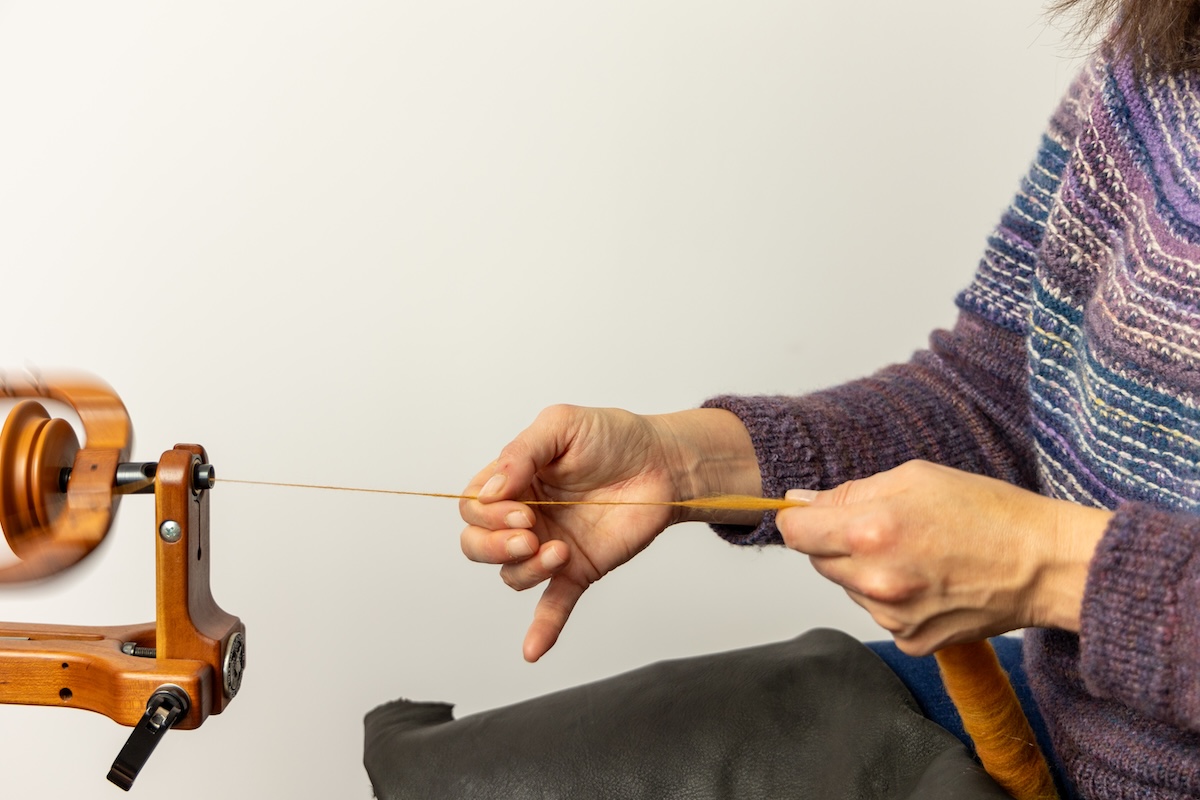
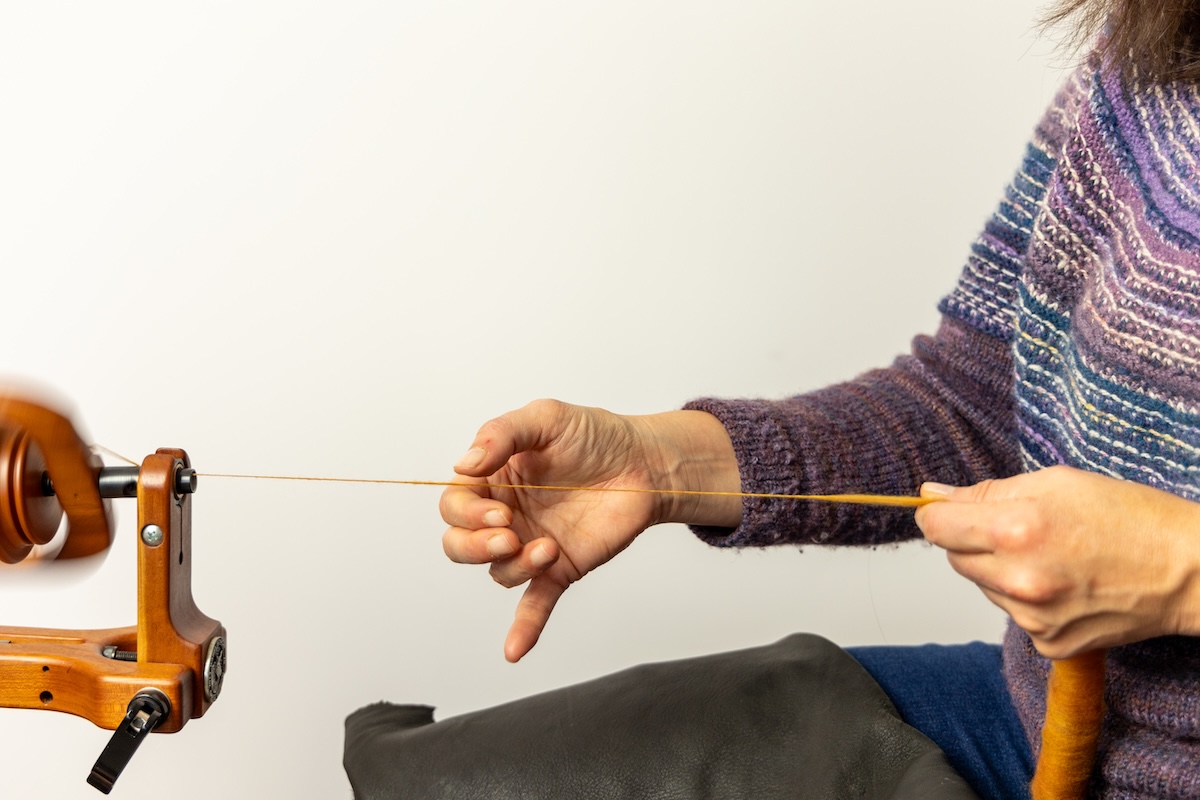
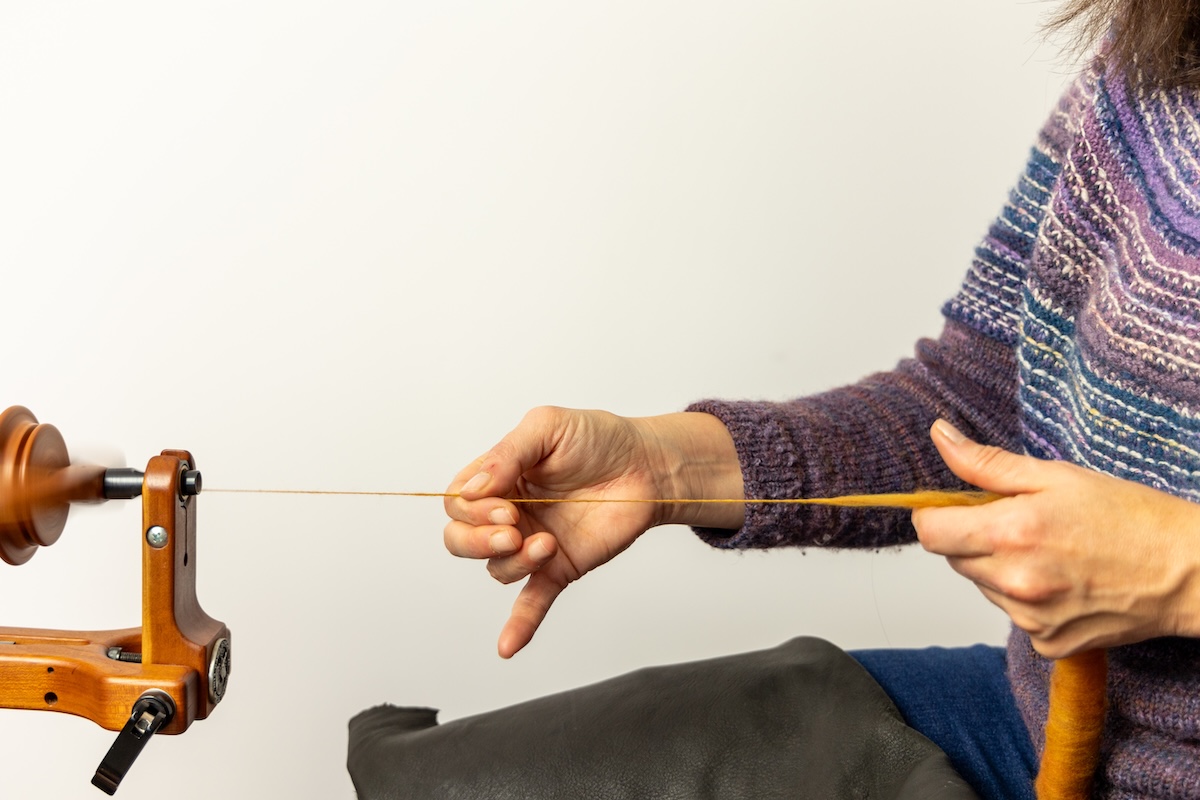
Supported Drafts
The word “supported” describes a drafting style where both hands are involved in drafting. The back hand holds the fibre source while the forward hand “supports” the make of yarn, opening and closing the pinching fingers as needed.
To execute the supported long draw, start by treadling a few times while the forward hand is pinching down on the yarn to hold the twist in front of the forward hand. In the meantime, the back hand pinches down behind the base of the drafting triangle. It is the aim of the back hand to, as consistently as possible, make the same amount of fibre available to the twist. This is accomplished with a gentle pinch just behind the allotted amount of fibre that will be given up to the twist. This back hand pinch needs to be strong enough to obstruct the twist from moving into the remainder of the fibre. As the forward pinching fingers are opened to release the twist, the back hand pulls back. Treadling continues as the back hand pulls towards the spinner, continuing to maintain the pinch on the fibre source. The pinching fingers of the forward hand open and close to control the amount of twist that makes its way down the yarn to the drafting triangle.
Before the make of yarn is twist-locked, I assess the thickness, evenness, and amount of twist in the yarn. If it needs to be thinner, I treadle a few more times to allow a bit more twist to move down the make of yarn while pulling with the back hand. If it appears to need more twist, I treadle a few more times to allow more twist into the make of yarn while keeping the back hand in place. If I see a lump or two of untwisted fibre along the make of yarn, I can even out these thick spots by moving the pinching fingers of the front hand to the yarn just forward of the thick spot, rolling the yarn in the opposite direction of the twist, and tugging with the back hand to help the twist move into the under spun spot. When the tension is released on the make of yarn, the yarn is wound onto the bobbin, and the cycle continues.
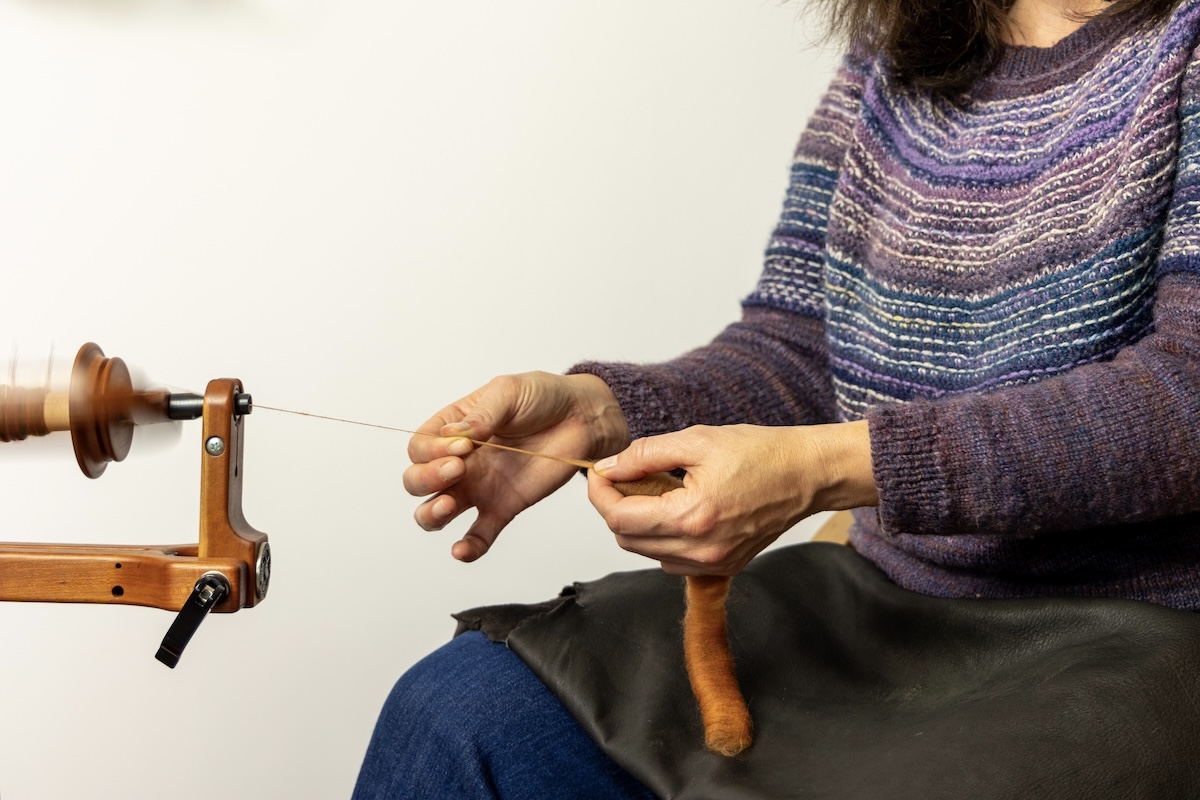
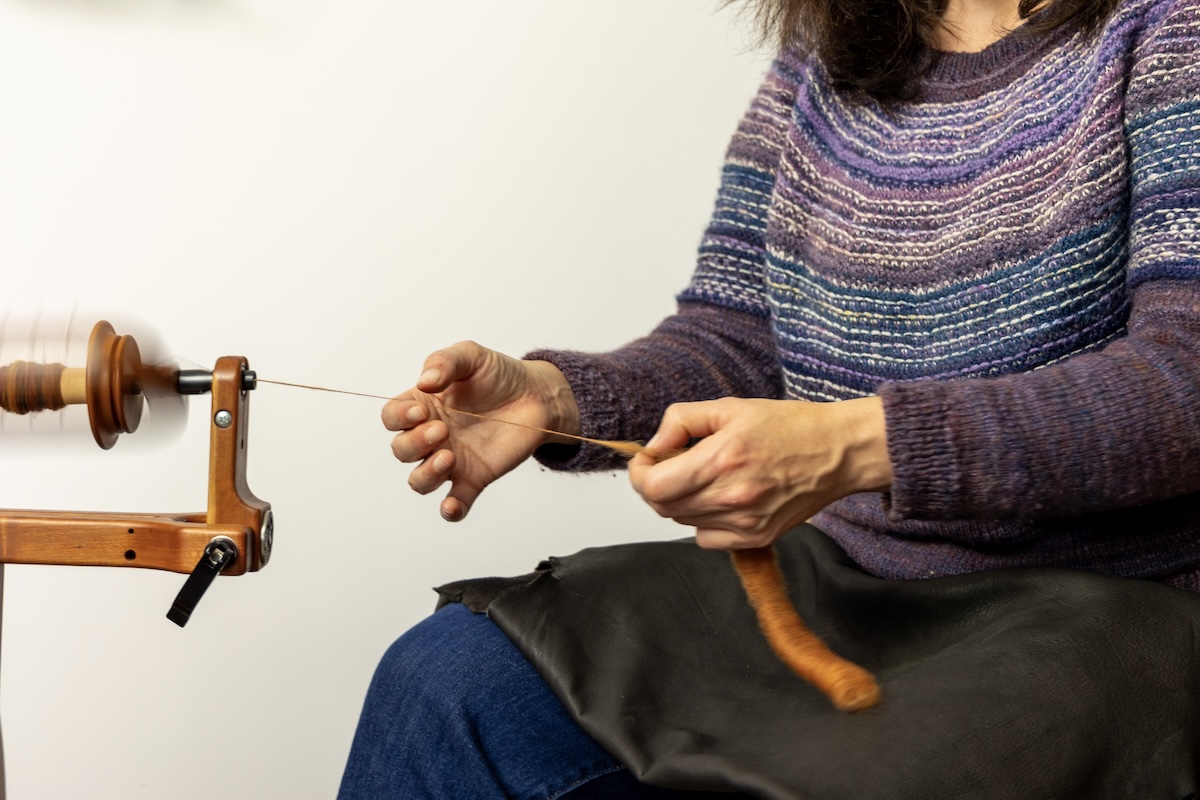
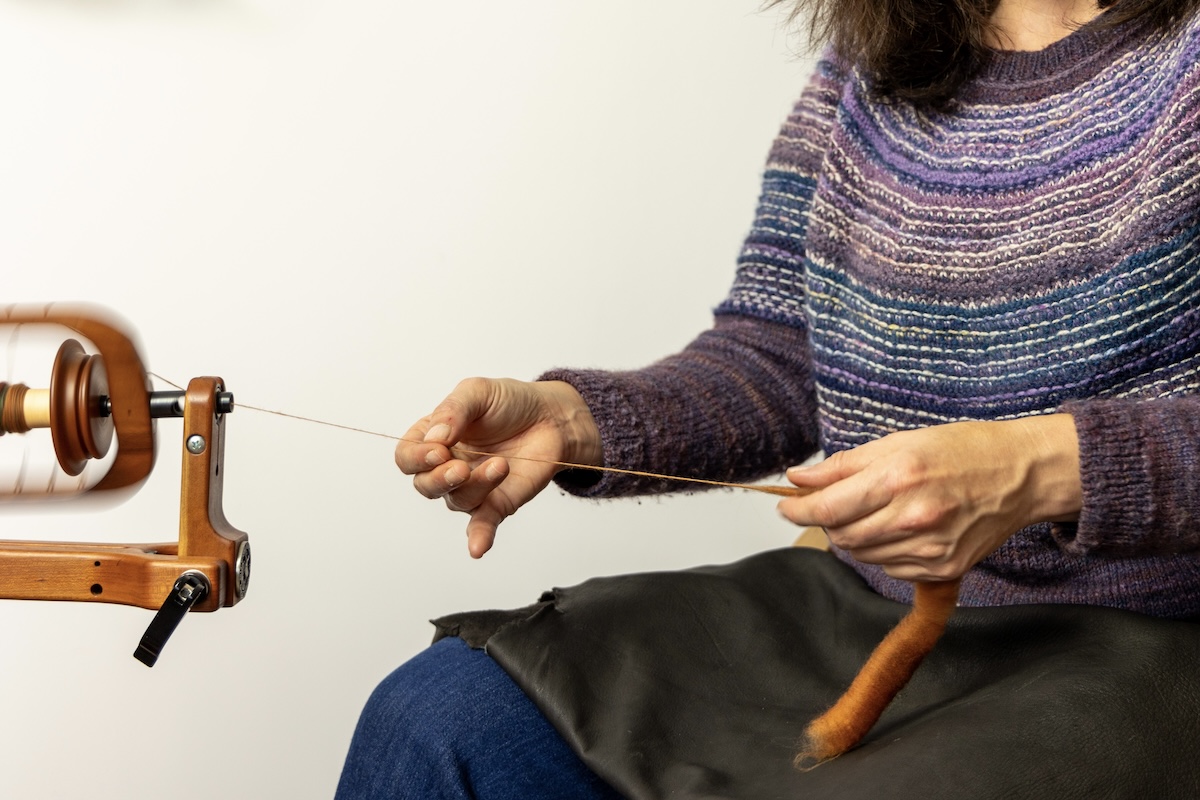
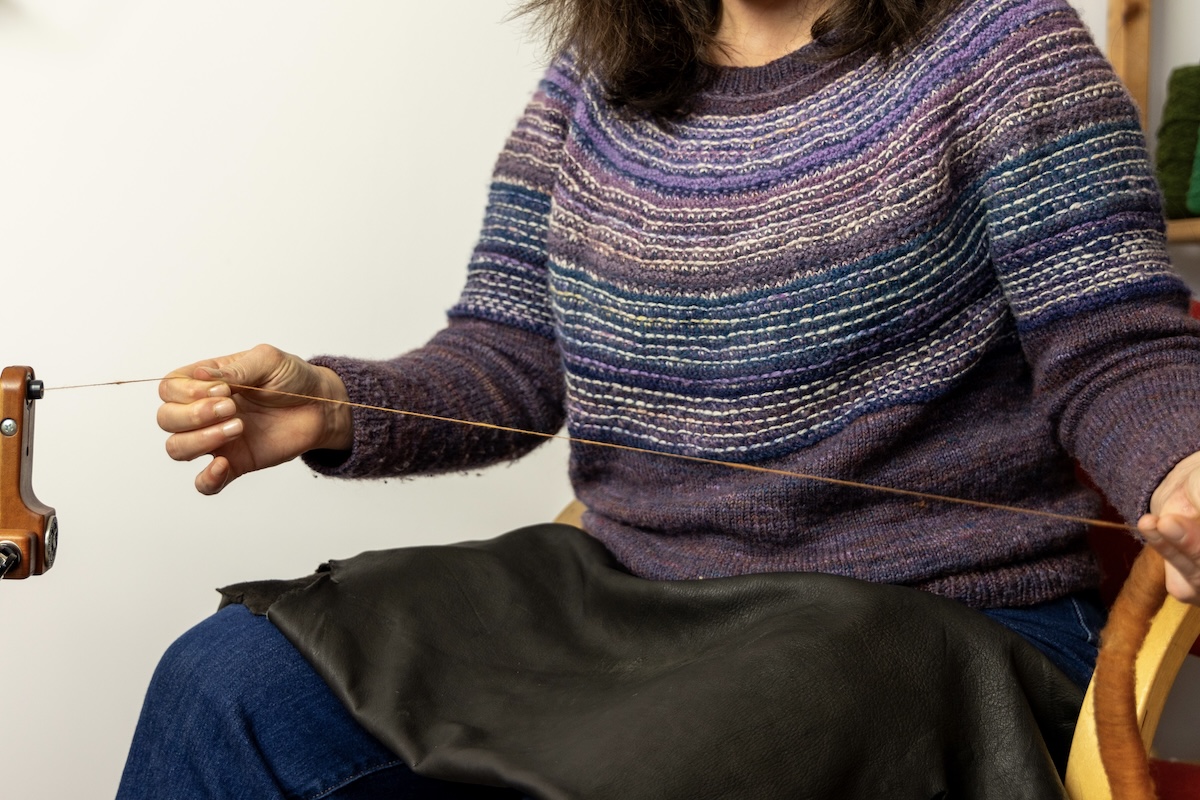
The sliding supported long draw is similar to the supported long draw except that the forward hand moves down along the make of yarn as the back hand pulls against the pinch of the forward hand.
Unsupported Draw
The unsupported long draw is similar to the other long draws except that the forward hand is not used. All the work is done by the fibre source hand.
Double Draw
The double draft has two separate, albeit subtle, steps. The first step is to pull the fibre back very quickly before the back hand pinches off the make of loosely spun yarn in front of the drafting triangle. The second step adds more twist to the loosely spun make of yarn. This is accomplished by continuing to treadle as the forward pinching fingers open and close while the back hand tugs against the twist. As the second amount twist works down over the twist from the first draft, the make of yarn will become thinner and a bit longer.
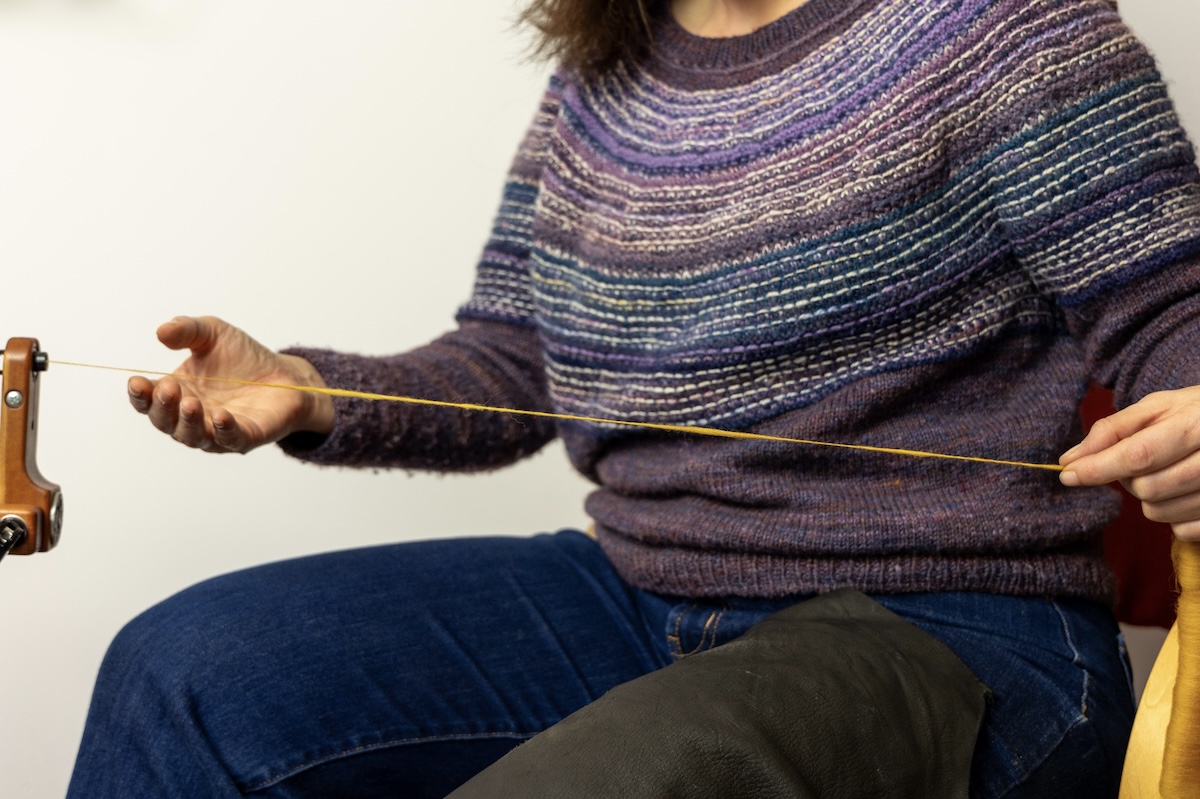
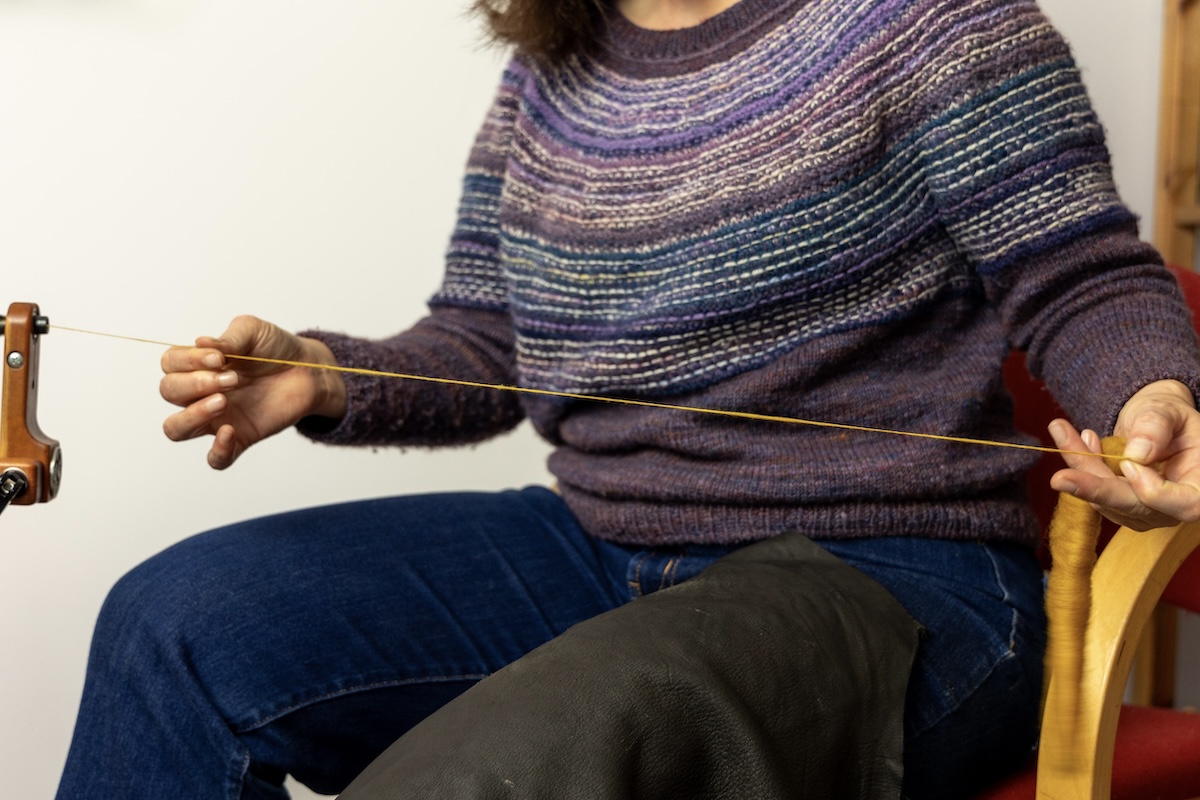
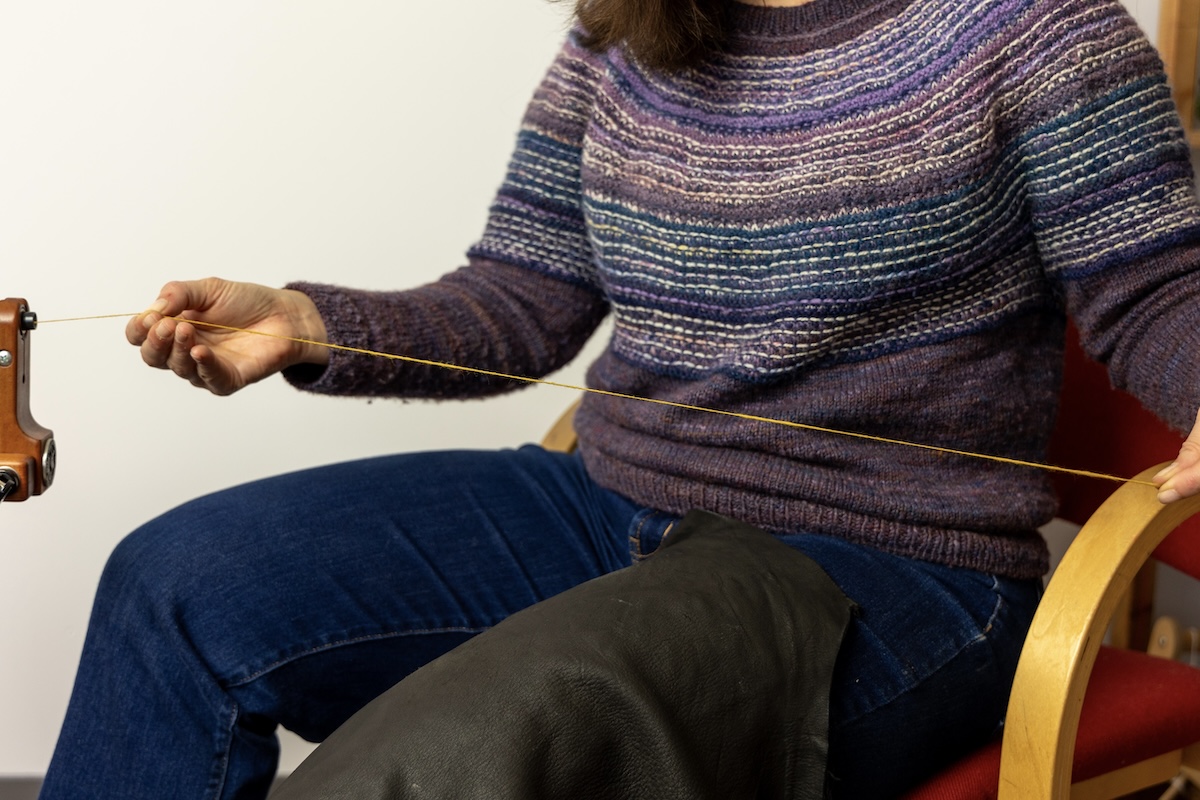
Forward Long Draw
The forward long draw is executed by the fibre being tugged against the twist as the forward hand pulls the fibre towards the orifice.
Tips for a More Successful Drafting Experience
- To achieve consistency in my handspun I must, as much as possible, make sure the draft length and number of treadles per draft are consistent. I say “as much as possible” because although this may be the goal, nothing is perfect.
- I prepare enough fibre to last me the length of time I plan to sit down to spin. I spin a more consistent yarn when I am able to keep up my momentum. My momentum is interrupted when I am constantly stopping to prepare fibre.
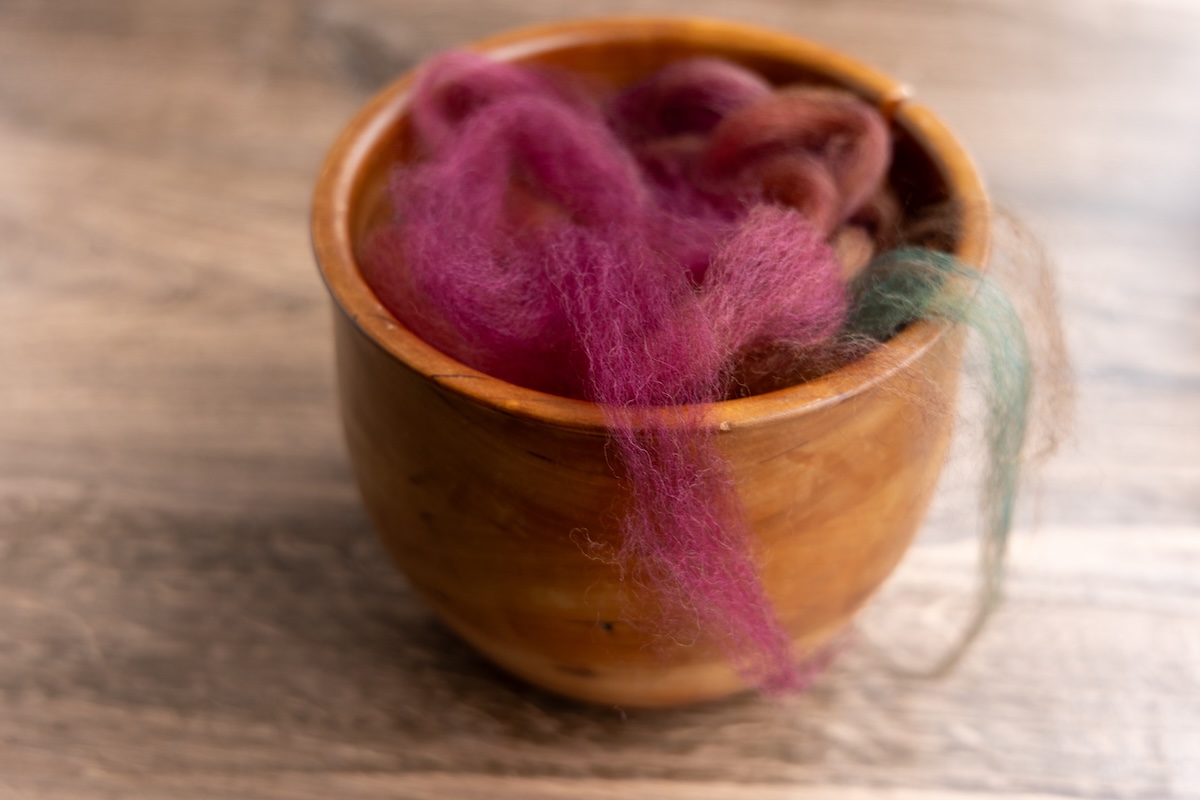
- To achieve a denser, more compact, harder-wearing yarn, I smooth the fibres with my forward hand by rolling my pinching fingers as I slide back toward the apex of the drafting triangle.
- There are many techniques I can use to achieve a finer yarn. One is to have less fibre in the drafting triangle. A thicker yarn is achieved by having more fibre in the drafting triangle.
- When spinning a worsted draft, a smooth yarn is achieved by ensuring I consistently pinch in the same spot in the drafting zone. If I pinch at the apex one time and at the vertex the next time, the yarn will be thinner and thicker, respectively.
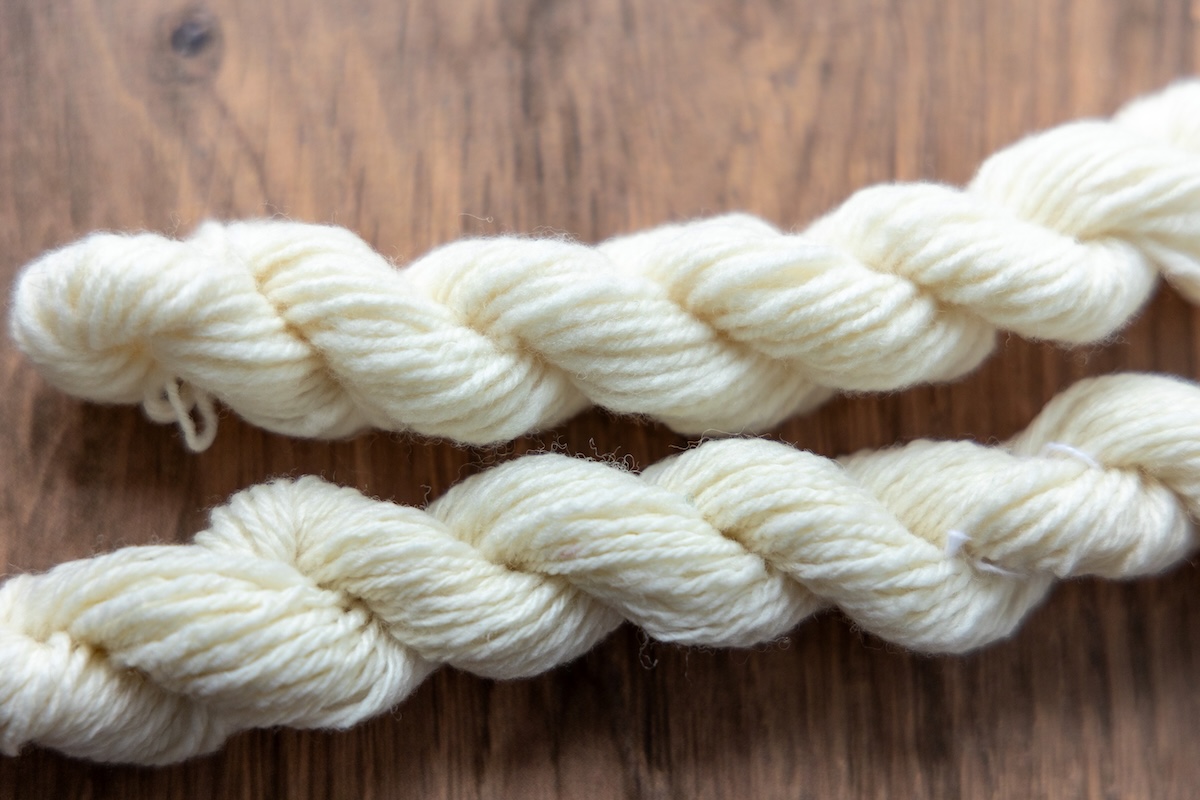
- Long-draw woollen drafts are more easily spun using shorter stapled fibres and higher ratios.
- When I spin worsted, my dominant hand is the forward hand. When I spin woollen, my non-dominant hand is the forward hand and my dominant hand is my back/fibre source hand. Why? I prefer to use my dominant hand in the position that needs finer motor skills. If you are struggling with a certain drafting technique, change which hand sits closer to the orifice and which sits closer to you to see if that helps. Don’t second guess yourself if someone suggests that the right or left hand should be the forward hand. Spin with whichever hand feels the most natural to you in the forward position.
Parting Thoughts
I find spinning most enjoyable when I spin using my signature spinning draft. When working with my signature spinning draft, I become lost in the rhythm of the spin. I don’t think it is a coincidence that this same spinning draft results in the yarn I am most attracted to, a yarn that is well-suited for my handwoven and handknit projects. As well as spinning yarns I am attracted to, I still like to challenge myself which is why I have taken the time to develop some proficiency with the other spinning drafts. Note: my signature spinning draft refers to the draft that feels comfortable and works seamlessly with me as I spin.
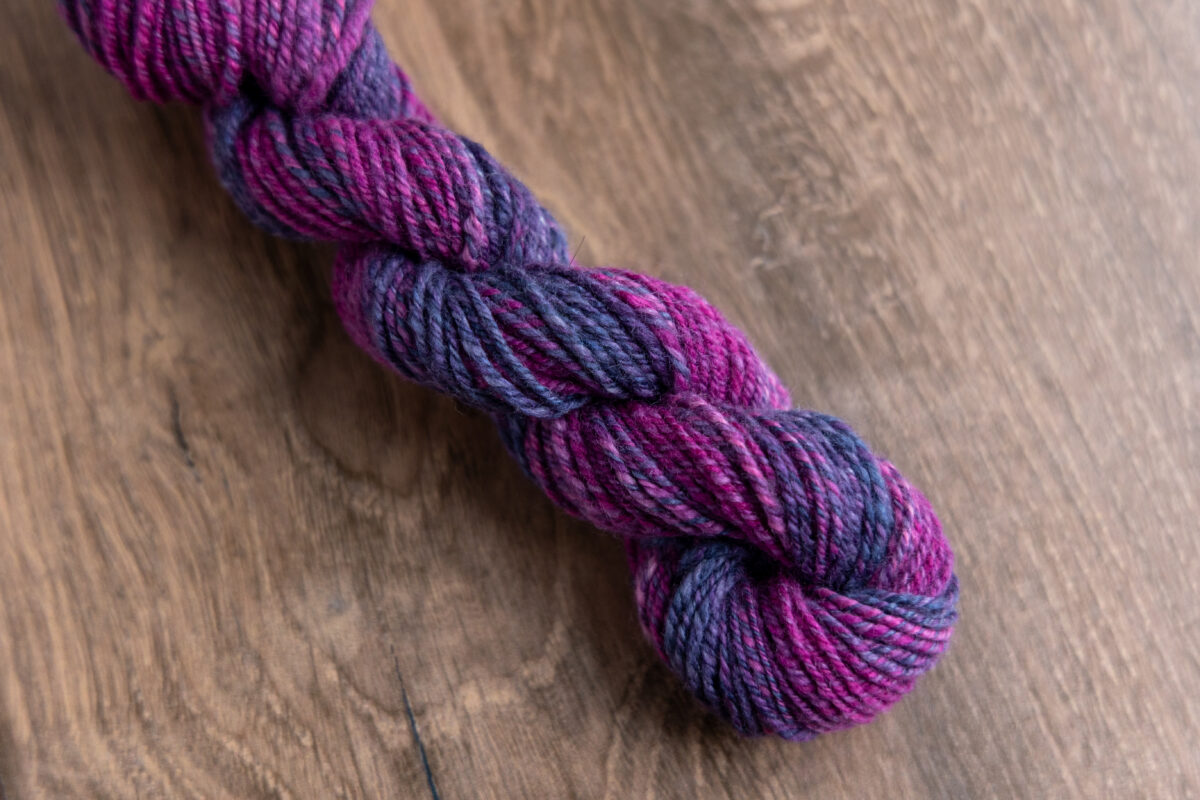
I hope this article serves to clarify the various drafting techniques available to you and helps you to improve your skillset.
Resources
- Spinning Wool: Beyond the Basics, Anne Field, 2010 (Trafalgar Square Books)
- Handspinning: Art And Technique, Allen Fannin 1970 (Van Nostrand Reinhold)
- The New Zealand Woolcraft Book: Constance Jackson, Judith Plowman, 1981 (William Collin)
- Find more of my articles here at SweetGeorgia
Interested in further exploring spinning content including online workshops, fibre prep-alongs, online meetups, and more? Come and join us over at the School of SweetGeorgia — with over 100 online courses, a friendly community of multicraftual makers, and fabulous instructors to help you along the way. Use the code EXPLOREWITHUS to get a 14-day trial for just $1!
The post The Many Styles of Spinning Drafts appeared first on SweetGeorgia Yarns.
Comments
Post a Comment